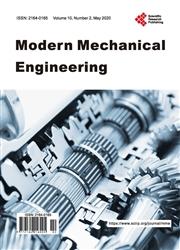Grading of Spot Welding Electrode Material Properties Using AHP
引用次数: 3
Abstract
An objective of this research is to rank the essential property required for spot welding material selection. Total ten attributes namely Electrical conductivity, Thermal conductivity, Rockwell Hardness, Wear resistance, Density, Cost, Melting point, Percentage Elongation, Yield Strength and Ultimate Tensile Strength were considered for the purpose of selection of the electrode Material. In order to select appropriate spot welding electrode, authors have studied various Copper alloys having equally good properties. The selection of essential properties was done using Analytical Hierarchy Process (AHP). Experimental work have been carried out on Cu-Cr-Zr material using universal tensile and found that the strength and hardness increases with alloying element, however percentage elongation decreases by 50 % as compared to pure Cu. While performing AHP, the authors found that electrical conductivity, wear resistance, thermal conductivity and Rockwell hardness proved to be the most crucial parameters. Wear of electrode material also affects on current density and performance characteristics of spot welding process and makes it more expensive. The ranking of the property thus provide an input to apply various Multi-Attribution Decision Making (MADM) techniques for selection of the appropriate material for spot welding application. This work is recommended to spot welding electrode manufacturers as well as end users in order to prioritize the properties for selection of spot welding electrode with longer life and good weld quality.用层次分析法对点焊焊条材料性能进行分级
本研究的目的是对点焊材料选择所需的基本性能进行排序。为了选择电极材料,总共考虑了十个属性,即电导率、热导率、洛氏硬度、耐磨性、密度、成本、熔点、伸长率、屈服强度和极限拉伸强度。为了选择合适的点焊电极,作者研究了各种性能相同的铜合金。基本性质的选择是使用层次分析法(AHP)进行的。用万能拉伸法对Cu-Cr-Zr材料进行了实验研究,发现合金元素的加入使材料的强度和硬度增加,但伸长率比纯Cu降低了50%,热导率和洛氏硬度被证明是最关键的参数。电极材料的磨损也会影响点焊过程的电流密度和性能特性,并使其更加昂贵。因此,特性的排序为应用各种多属性决策(MADM)技术来选择点焊应用的合适材料提供了输入。这项工作推荐给点焊电极制造商和最终用户,以便优先选择使用寿命更长、焊接质量良好的点焊电极。
本文章由计算机程序翻译,如有差异,请以英文原文为准。
求助全文
约1分钟内获得全文
求助全文

 求助内容:
求助内容: 应助结果提醒方式:
应助结果提醒方式:


